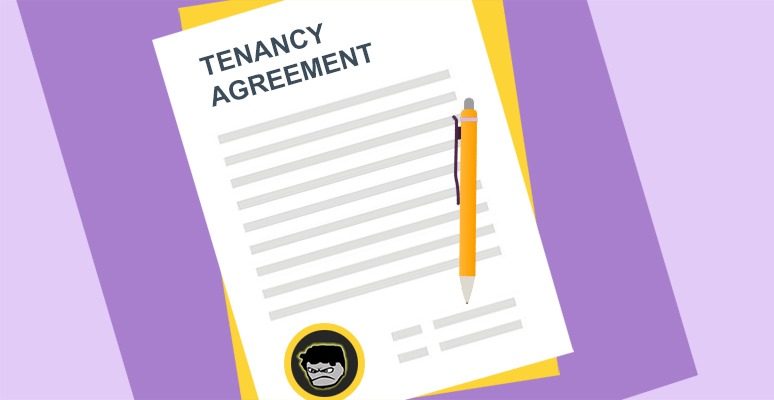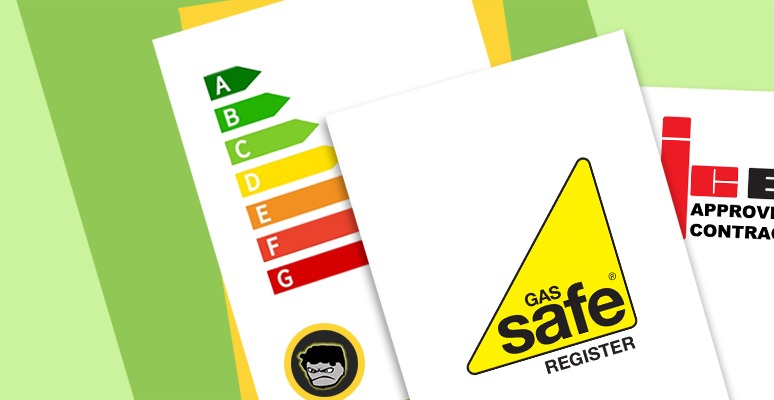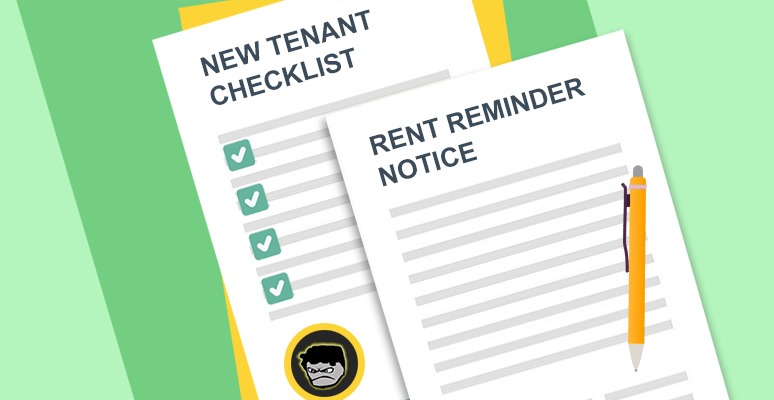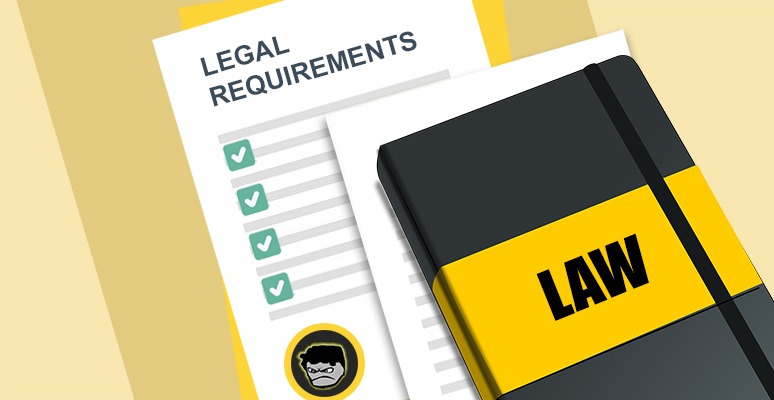I’ve already written a rather beefy Landlord guide on tenants with pets, which covers a lot of the commonly asked questions, including whether landlords are legally obligated to accept tenants with pets (spoiler: they’re not).
So this is essentially a continuation from that, where I drill into pet clauses and tenancy agreement contracts.
Whether you’re a “pet-friendly” landlord or not, you’ll want sensible clauses in your tenancy agreement to support your position the best way possible.
(needless to say, none of this is legal advice, especially the examples clause I’m going to provide in this post. You should defo contact a qualified specialist for advice before acting on anything that you read or download from here!)
Table of contents
- Tenancy agreements that don’t contain pet clauses
- Tenancy agreement clauses for pet-friendly landlords
- Tenancy agreement clauses for non pet-friendly landlords
- Tenancy agreement clauses that cover damages by pets
- Tenancy agreements and professional cleaning clauses
- Download Tenancy Agreements with pet clauses
- Download your landlord pet policy schedule
Tenancy agreements that don’t contain pet clauses
If you have a tenancy agreement template in your hands that doesn’t make your position on pets clear – if it’s not too late – then I suggest throwing that puppy straight in the bin. It’s a dud.
You’d be better off sourcing for another one that does include pet clauses that represent your position (sit tight, I’ll plug my tenancy agreement contracts shortly).
Every half-decent tenancy agreement will contain pet clauses, whether they’re pet-friendly or not, and in-turn it should be made clear to the tenant what the terms are.
If it is too late – and you’re using a dud – then it’s possible that the tenant has been given free reign and it will likely be harder for landlords to argue that pets are not allowed.
If your tenant has a pet or wants to introduce one into the home, and you’re pet-friendly, then you might want them to agree to a pet policy.
Tenancy agreement clauses for pet-friendly landlords
This can work in one of two ways, depending on your current situation:
If your new tenant has a pet
If you’re in the midst of preparing a tenancy agreement for a new tenant that has a pet, then you could use a tenancy agreement that:
- Refers to a pet policy (find a downloadable template below), which outlines the conditions under which tenants may keep pets in the property
For example, use a clause like this:
The tenant agrees that they will abide by the pet policy as shown in Schedule 1 attached to this tenancy agreement.
- Restricts the number of pets, and defines the animal and breed that has been approved (this can either be done in the tenancy agreement and/or a separate pet policy.
For example, this is the clause I use in my pet-friendly tenancy agreements:
7.3 It is agreed between the Landlord and Tenant that the Landlord grants permission for the Tenant to keep a pet [INSERT ANIMAL TYPE(S) AND BREED(S)] named [INSERT ANIMAL NAME(S)] (“The Pet”) in The Property for the duration of the Tenancy. The Tenant agrees not to keep any further pets or animals of any description on the Property without the prior consent in writing of the Landlord.
If your new tenant doesn’t have a pet
If you’re in the midst of preparing a tenancy agreement for a new tenant that doesn’t have a pet, then you could use a tenancy agreement that:
- states written consent is required first. For example, by using a clause like this:
A Tenant must seek the prior written consent of the Landlord should they wish to keep pets or other animals at the Property.
Tenancy agreement clauses for non pet-friendly landlords
We need to be careful here (you’ll understand why once I explain the situation).
I think the best way to approach this is if I present what I believe to be the facts, and then I can leave it in your capable hands to do further due diligence and decide what you want to do. Fair? Cool.
Currently, there are no pet specific laws for landlords and rental properties. For example, there is nothing to say that landlords have a legal obligation to accept tenants with pets. However, that doesn’t necessarily mean other pieces of legislation can’t be used to form a position or a defence.
Option 1: Provide a no-pet position by default
This article on the commonslibrary.parliament.uk website states it’s not advisable to blanket ban pets in a tenancy agreement as it could be considered to be an “unfair term” and challenged under The Consumer Rights Act 2015. So instead, they recommend using a clause that requires the landlord’s permission if the tenant wants to keep a pet (this way the tenant doesn’t have a default right to introduce pets into the property).
To reiterate, since there are no specific pet laws in renting, it’s hard to say how successful challenging a blanket pet ban would be under the “unfair term” defence. Using a permission based clause is just their suggestion, not legal advice or a citation of the law.
If you want to take on board the advice given, you can use a clause like this:
A Tenant must seek the prior written consent of the Landlord should they wish to keep pets or other animals at the Property.
If then the tenant moves a pet in without permission, they will be breaking the terms of the tenancy and therefore potential grounds for eviction.
If your tenant asks for permission as per the clause, you can then assess the situation. The likelihood is though, you’ll be expected to provide a fair and reasonable reason for why you refuse the request. For example, it might be reasonable to refuse permission to keep a large dog in a small flat.
Option 2: Provide a firm no-pet position
If you’re adamant on having a strong a no-pet policy (which many landlords are), you can use a clause like this (and hope it doesn’t breach any unfair terms):
7.3 The Tenant shall not keep any pets or any other animals on or in the Property.
Personally, this is what I use, but I use it as a deterrent more than anything else. While I’m not entirely against tenants having pets, I don’t want to encourage it either. Some tenants have read the clause and asked if they can have pets anyways, which I think is perfectly reasonable.
And actually, I had my tenancy agreements drawn up by solicitors that have a specialist landlord law division, and they included the clause in my contracts (I ordered a variation of pet-friendly and non-friendly agreements), so make of that what you will.
Tenancy agreement clauses that cover damages by pets
You don’t actually need any.
In the event of any damage caused by pets, with or without any specific pet clauses, the tenant will be held liable. The tenant has an obligation to return the property in the same condition as they received it in (minus wear and tear).
Damage is damage, it doesn’t matter if it’s caused by a tenant, their friend or their dog. Simply, if it happens on their watch, it’s their responsibility. The security deposit can be used to cover damages caused by pets.

Tenancy agreements and professional cleaning clauses
Unfortunately, this is a no-go. At least, it is for landlords in England.
With the introduction of Tenant Fees Act 2019, landlords in England are prohibited from charging tenants for a professional end of tenancy cleaning service or demand the tenant to pay for one.
The requirement for tenants to pay for end of tenancy cleaning services were commonly found in tenancy agreements – and they still are – but those clauses are now unenforceable. I would remove them if they’re present, or get an up-to-date tenancy agreement.
But as mentioned, tenants will still be required to return the property in the state they received it in, and landlords can still recoup any repair costs from the deposit
Download Tenancy Agreements with pet clauses
Here it is, my shameless plug.
If you’re interested in downloading tenancy agreements with pet clauses, I have a couple of variations available:
- My pet-friendly tenancy agreements – this requires the tenant to ask for permission first.
- My non pet-friendly tenancy agreements – this uses “The Tenant shall not keep any pets or any other animals on or in the Property” clause.

Download Your Tenancy Agreement
- Only £4.99 - download once and unlimited use
- All of our Tenancy Agreements were originally drafted by specialist landlord law solicitors
- Provided in .doc format so fully editable
- Written in "plain English" with easy to understand terms and conditions
- GDPR updated
Download your landlord pet policy schedule
If you do have tenants with pets – as already mentioned – I recommend using a pet policy to supplement your Tenancy Agreement – this will outline relevant conditions under which tenants may keep pets in the property. For example, the policy can contain the following conditions:
Tenants must not leave their pets in the property when they are away unless clear arrangements have been made for their care.
Any dog listed under the Dangerous Dogs Act 1991 may not be kept at the property with the exception of dogs registered on the Index of Exempted Dogs.
If you do want to use a pet policy, you can reference it in the tenancy agreement or write a separate covering letter, which requires the tenant’s name, signature and date, to confirm that they agree to the terms.
Disclaimer: I'm just a landlord blogger; I'm 100% not qualified to give legal or financial advice. I'm a doofus. Any information I share is my unqualified opinion, and should never be construed as professional legal or financial advice. You should definitely get advice from a qualified professional for any legal or financial matters. For more information, please read my full disclaimer.


 Landlord Products / Services
Landlord Products / Services































My daughter signed a rental agreement with states ,"There will be a $35 fee per month for pets." When she attempted to adopt a dog, the landlord told her he had changed the policy (rescue called him, he told them, they called my daughter)...anyway, is this legal in the US? He stated he was tired of the flea issues in some of his other properties. Can we do anything? My daughter is extremely depressed because she was looking forward to having a companion. He even stated she could have a pet when she toured the property. What is your advice?